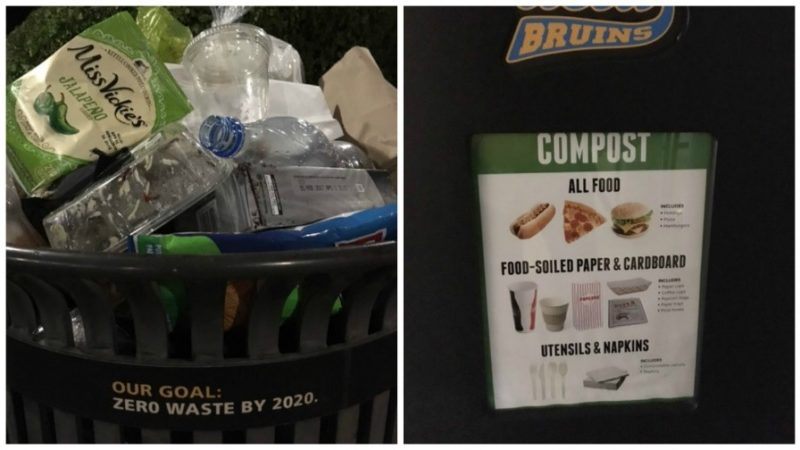
By Mark Alan Biedlingmaier
With the dark force of environmental dilemmas upon us, we found a new hope at this week’s stakeholder meeting with Emma Sorrell. As the Sustainability Manager of Housing and Hospitality Services, Emma provided a wealth of insight on the ongoing battle of reducing waste on The Hill and across University Apartments. Throughout our meeting, we looked at the two major ways to go about waste reduction. One viable method to evaluate infrastructure such as waste receptacles and loading docks for removal to off-site facilities. Although on and off-site living facilities across University Apartments are different beasts to handle, Emma reassured us by discussing how Athens, UCLA’s major waste management company, was interested in expanding services surrounding green waste at University Apartments.
After noting the good news, Emma enlightened us on her team’s second major approach to reducing waste, using communications to instill environmental responsibility in the individual. Some of these solutions revolved around creating dialogue through online pledges via the “My Last Trash” campaign or perhaps merging sustainability education with art through visual displays of how to sort waste. With another successful meeting under our belt, our team was ready to communicate these new ambitions at our lovely meet and greet with the Weyburn/Hilgard Resident Association(WHRA) board of student directors on Valentine’s Day. After briefly introducing ourselves and our goals for the Grad Housing SAR team, the graduate students engaged us in a stimulating dialogue of waste issues from their perspective. AJ, who serves as President, expressed how it was a shock to come from a University that has established green waste programs to not see composting services in place at UCLA. Amy and Hannah, who serve as Event Coordinators, discussed how dull or non-existing signage serves as a barrier to successful waste sorting. As a group, we discussed feasible solutions such as using eye-catching colors and images to clearly identify how to make educated decisions on what to do with varieties of waste. One of the most assuring solutions was to bring back a previously successful program that allowed students to “upcycle” their materials through donation receptacles for the utilization of creative repurposing.
As we began digesting the feedback from Emma and the graduate students from WHRA, our team feels confident in the next steps of performing research and the implementation of hopeful solutions to combat the ever-pressing dilemmas in the dark side of environmental issues.
